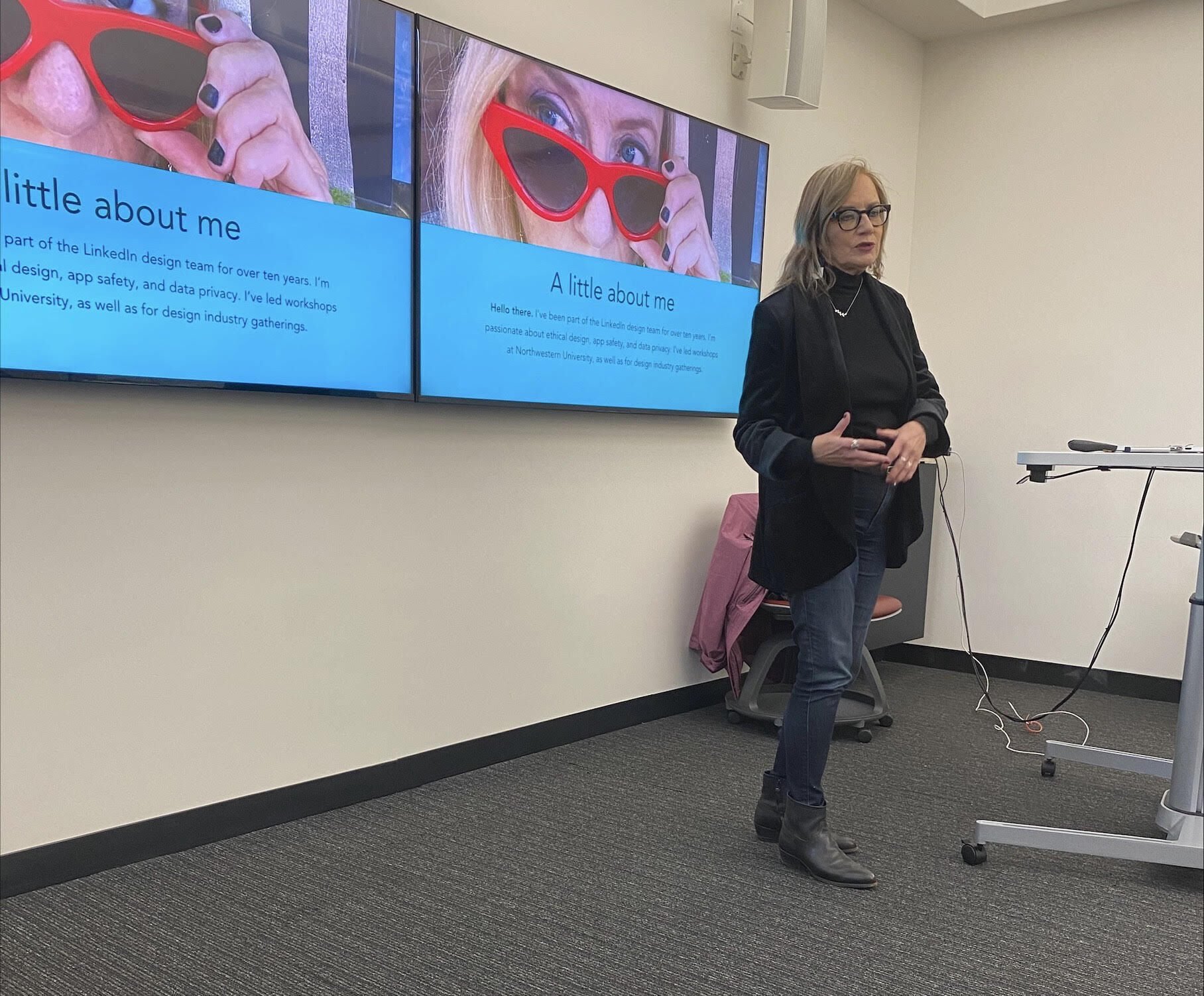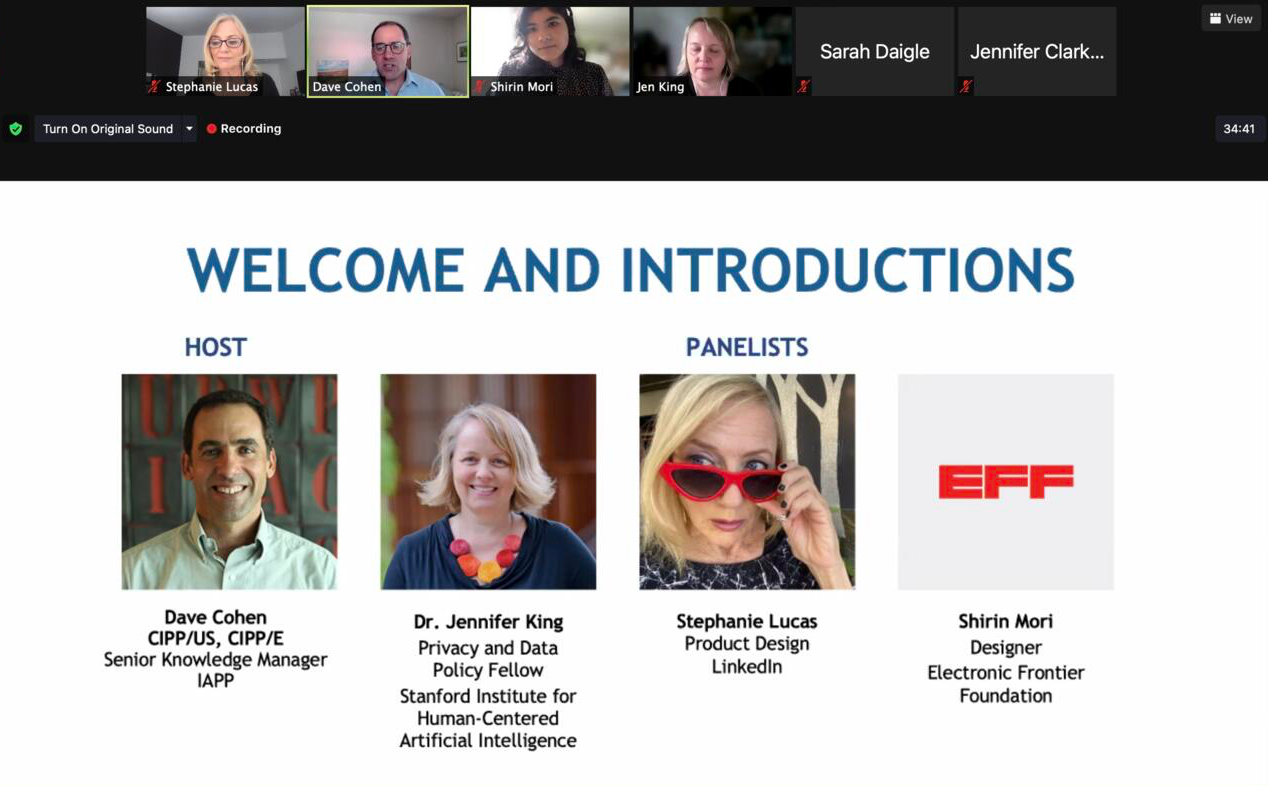Deep expertise in content design, storytelling, and most importantly: trust.
⇩
My recent work
LinkedIn Verifications
As the lead content designer for LinkedIn verifications, I needed to build a copy experience that led to understanding of LinkedIn’s unique approach to verification: unlike other social media platforms, it’s not the profile nor the person that’s being verified, but a credential. Like a work email address, or a government ID.
This was a cross-product, fast-moving, high-profile project that the Chief Product Officer considered the most important launch of the year.
Was the content design successful? User study after user study showed that even though the LinkedIn model for verification was novel and fairly complex (compared to other social platforms’ models), ~80% of participants found the experience easy to understand, trust, and use.
Key skills: Making complex topics understandable with clear, human language
Name Mismatch in LinkedIn Verifications
One of the most gratifying (while difficult) phases of the Verifications project was working on ways to provide government ID verification for those who choose not to use their ID name on their LinkedIn profile (such as the trans community). The product and engineering teams devised ways to avoid rejecting an identity verification outright by introducing accommodations in the backend systems. But there are valid cases where members’ chosen names are so different from their ID name, the verification check failed. Because the badge is a symbol of authenticity, we continually needed to weigh a safety assurance bar versus individual cases.
We spent many cycles exploring how to meet our safety standards while avoiding methods that were overly-intrusive. Ultimately (at least for now), the solution that met the standard was to add an additional name on the member’s profile top card.
Handling the moment when we asked the member to take an additional step to correct this meant keeping equity top-of-mind and building empathy into the language.
Key skills: Working with an inclusive mindset, to make sure as many members as possible had access to a verification on their profile
Office Hours: Content design coaching for LinkedIn designers
As part of my role at LinkedIn, I hosted well over 200 drop-in “Writing Lab” sessions, providing designers across R&D with quick but thorough consults on how to bring the copy they were designing into their features.
Writing labs are a way that LinkedIn helps scale its content design capabilities to keep pace with the rapid feature development driving the company’s growth.
Succeeding in this role means having deep knowledge of the content guidelines, as well as being able to quickly grasp the goals and workings of the feature being designed.
Key skills: Asking the right questions to quickly understand the goals of a feature design; coaching young designers in how to work with product managers toward user-first content design; educating designers on voice and tone standards
“Stephanie has a great users-first compass that helps her push back when she feels that a project might be meeting business goals over the user’s Job To Be Done. She is also great to collaborate with, as she asks thoughtful questions that question the ‘why’ on our product decisions. Finally, she always delivers, no matter the workload on her plate you can count on her to get the work done when it's needed.
Respected public speaker on ethical and safe product design
I was thrilled to be invited onto Marie Potel-Saville’s highly respected Fairpatterns podcast, discussing why designing for trust (and saying “no” to deceptive design) is more important now than ever.
Guest speaker for Dr. Jennifer King's "Identifying Dark Patterns" class at Stanford, where I discussed how consumers need to trust companies and products they use now more than ever – and that trust is, in itself, a differentiating value proposition.
Featured on Larry Swanson’s Content Design podcast series, where I discuss the importance of instilling trust as a practice, and the important role content design plays.
California College of The Arts - Summer 2022
Masters design class lecture on privacy and ethics for designers
ITSP Magazine
Guest on “Redefining Technology” podcast: The intersectionality between privacy and design
San Jose State University - Fall 2021
Alumni Speaker and Red Team/ Blue Team workshop
International Association of Privacy Professionals
Panelist for Global Privacy Summit discussing dark patterns and responsible design
California College of the Arts, San Francisco, CA
Guest instructor for a “Red Team/Blue Team” workshop for designers in the masters program
Northwestern University, Evanston IL
Guest instructor for a “Red Team/Blue Team” workshop at the Design for America Summit
Button Content Design Conference 2020
Panelist, discussing ethics in design and how to foster responsible design culture in product organizations
Cascade SF UX Night
Speaker for Cascade SF UX Night’s responsible design program
Other events:
Panelist on Responsible Design for LinkedIn Women in Product webinar
Guest on “Voice of Design” podcast by Mule Studio
Co-speaker for SF Design Week 2020 talk on responsible design
Workshop leader at IxDA SF’s SF Design Week program on responsible design
Workshop leader for Ladies That UX SF event on responsible design














